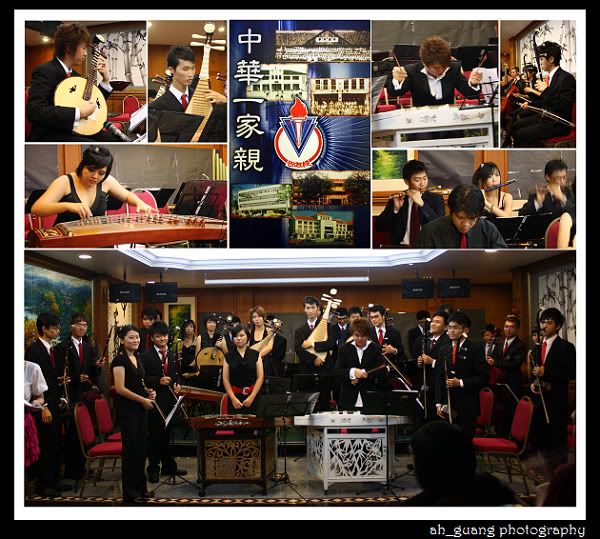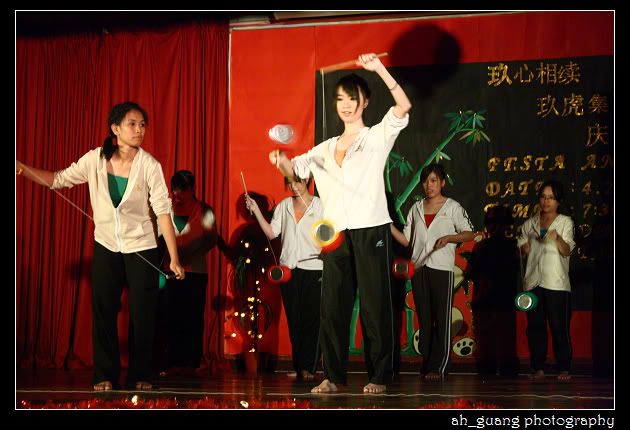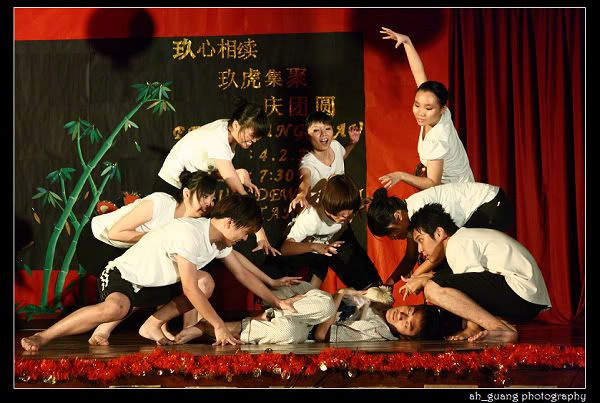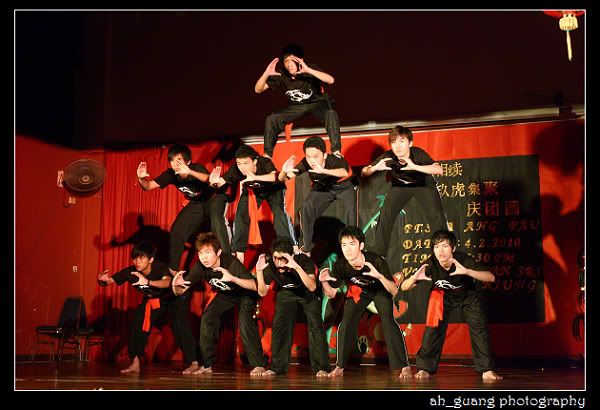Sorry guys, its already three weeks since my last entry. Too busy(eating, celebrating and shooting) and too lazy... By the way, its Chinese New Year what, who works that hard during this period? Not me.. Haha..
OK, for the past three weeks I have been to two events taking photo. One of them is a paid Chinese instrument symphony orchestra, while another one is Ang Pau Festival of UM 9th Residential College (just a coincidence that I am free that time and in the college). Learned some really techniques there (as I am still a beginner).
In these events, normally the light will be dim and performers are moving all the while. Some useful tips is:
- Push up ur ISO to an acceptable level (for me no choice, ISO1600 is the limit of my camera)
- Use the fastest shutter speed available
- Check the white balance of the stage
- Ask for the flow of the event to know the performances coming up
- Attend their rehearsal (if possible)(ask for permissions too)
- PRACTICE MORE!!!
For details and photo, please click 'Read More'...
Obviously, the 1st and the 2nd tips is to reduce shutter lag. In dim light situation (low light), the only way to achieve an acceptable shutter speed is to raise your ISO. During my 1st shooting, most of the photo were taken using ISO800 as I afraid that raising the ISO up to 1600 will greatly reduce the photo quality. However at the end of the day, most of the photo are blurred due to the continuous movement of the performers (of course la, they are performing what..). The quality is only acceptable, but the precious moment, timing, where the performers looked best are missed.
Either image quality or 'the moment'?
I will choose 'the moment'...
For the 1st event most of the photos are blurred. So I've only selected a few to crop into one.

During the second event, I've choosen to use ISO1600 and this enabled me to use an average shutter speed of 1/30. Although this is still considered quite slow, but it is far better than the previous event(S.P. of 1/8). Here are some of my more favourable shots during the second event, with some sense of 'the moment'..

Hero saving beauty.. Blurred a bit dy..

Left girl throwing a diabolo to the right girl who already holding one diabolo

Mosquitoes surrounding a peacefully sleeping boy..

Human Pyramid as if they are asking people to take photo of them...
About white balance. I have'nt mentioned this in my previous post, but this is quite important as white balancing will fix the colour bias caused by stage lightings. Most of the stage lights are comprised of several colour like green, yellow and red. When these lights beam onto the performers the original colour of the performers will be changed and become unnatural when viewed. Try comparing the two photos below:

The left was shot without adjusting the WB in the camera, the WB of the right is corrected using 'auto colour' function in Photoshop. Can you see the difference? The left is more reddish while the right is corrected.
WB may seems like a minute thing to take care of, but it is important thing to be noticed in achieving a good image.
A reminder here is, WB can be adjusted from the camera, or post processed using software. But the a better image quality can be obtained if adjustment is done using the camera.
The 4th and the 5th tips are quite similar. If you get to know the flow of the event, you gain an advantage which is, you get to know when is the best time to get an impressing shot of a performance. During the 2nd event I attended, one of the hardest performance to shoot is the diabolo performance. You'll never know when is the best time to press the shutter if you do not know well about the performance. The essence of a diabolo performance is when the performers throw 2-4 diabolos at a time without dropping any; or throwing up a diabolo 2-3 meters above the ground. Miss the moment, then you'll miss the shot, FOREVER. That's why knowing the performance (or best, attending their rehearsal in advance) is the best way to capture a great event photo.

It tooked me some while to take photo of this...
The final tips, well, I think I don't have to elaborate on that. Practice more! Hehehe...
Event photography is a very interesting part in photography. It really requires thinking and observing. Unlike portrait/macro/scenary, capturing the moment is the most important aspect. And another thing is, event photography is also one of the most money-making photography as there are always event out there waiting and employing photographers(especially wedding photographer). Practice well, and it can be an additional income for you too!
Gong Xi Fa Cai to all too!!!
more photo here: http://www.facebook.com/album.php?aid=2052548&id=1436539115&l=ab02810383
Read more...







